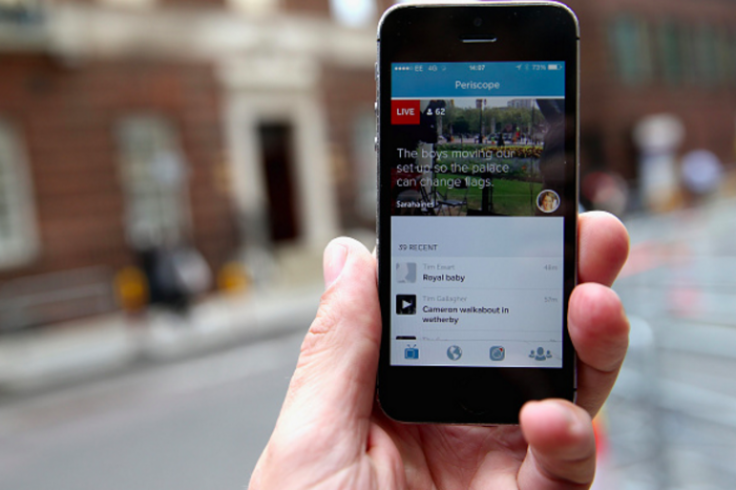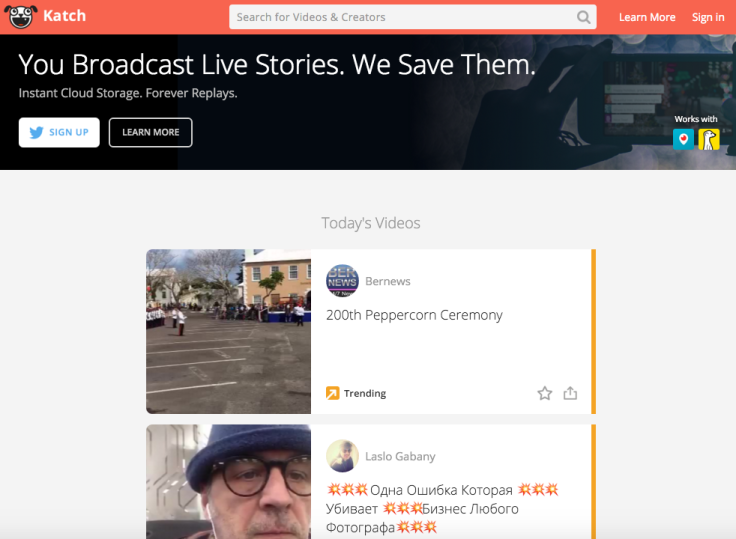Katch, ‘Hulu For Live Streaming,’ Shuts Down With More Than 1 Million Active Users But Not Enough Funding

Mobile live-streaming got a big boost in credibility after Facebook turned on the switch, just a few months after Twitter released Periscope. Yet a year in, live-streaming casualties are starting to mount.
First, it was Meerkat, the onetime tech darling, which last month pivoted away from live broadcasting. Now, on Tuesday, Katch.me, one of the first startups built to support the rise of mobile live-streaming, announced it will shut down.
Founded in March 2015, Katch.me allowed users to save live broadcasts by tweeting #katch, which would save the footage save to the user’s profile on katch.me. It was an important service at a time when Meerkat videos disappeared right after broadcasting. Periscope broadcasts are only viewable for 24 hours on the app. With Katch, broadcasters could have a page, almost like a portfolio, of their live videos.
But on May 4, Katch will shut down. The reason? The company had not received enough venture capital funding to continue operating, Katch’s executives shared on a Periscope broadcast Wednesday afternoon.
“It sucks. It’s also the world of startups,” said Katch CEO Tarikh Korula on the broadcast. He later shared on Medium, “We always saw Katch as a Hulu for live streaming. But if we were going to get there, we would need more resources.”

The five-person team headquartered in New York had pivoted from their previous company to build out Katch earlier last year. The team had raised $4.62 million for the prior company, a social analytics firm, and most recently $1.25 million from a seed round from Horizons Ventures, KEC Ventures and David Tisch in November 2014.
Like a lot of startups, Katch was still in search of a business model. There were no ads on the site nor did they require users to pay a subscription fee. The team did not want to build out revenue features that they thought would jeopardize the necessary growth, according to the blog post on Medium.
“When we got down to brass tacks, no matter how we ran the numbers, a premium version of Katch didn’t represent a venture-backed opportunity,” the blog post reads.
The service required significant funding not just for paying employees but for maintaining the functions of the product. Katch had to pay for servers to keep up with the storage of all the live videos. In March, there were more than 1 million monthly active users.
Those users will not lose their content when the service shuts down in two weeks. A new migration tool will allow users to move all their saved videos to YouTube or just download an archive. “One of the thing that matters the most to us is you get to keep all the history that you made,” Korula said on the Periscope broadcast.
Since their launch last year, Facebook Live was released, and YouTube is reportedly building its own live-streaming app called Connect. But Katch users who took to Twitter to weep shared that the shutdown could be a strike against Periscope and a boost to Facebook Live, which now has an application program interface so developers can build more features.
How sad to lose Katch. YouTube won't save comments only video. #katch We will miss you guys.
— Lori Richardson (@lorricha7) April 20, 2016
For all my fellow livestreamers, this is a hard punch to #Katch!! And unless Periscope adds the ability to save... https://t.co/qk8JblOwLY
— Lizza Monet Morales (@xoxoLizza) April 20, 2016
Quote it: The death of @KatchHQ is a near-fatal blow to hard-working Periscope evangelists. Somewhere, @iSocialFanz is weeping. #SMMW16
— Chris Strub (@ChrisStrub) April 20, 2016
Twitter reports first-quarter 2016 earnings on April 26.
© Copyright IBTimes 2024. All rights reserved.






















